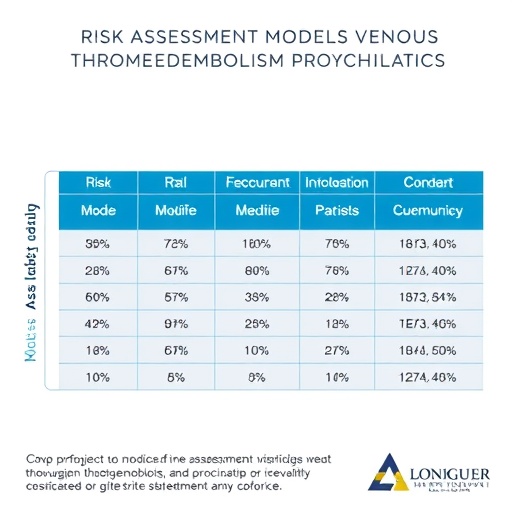
Scientists at the University of Pittsburgh have made a groundbreaking discovery that links Alzheimer’s disease with the herpes simplex virus-1 (HSV-1). This revelation, published in the esteemed journal Cell Reports, could pave the way for innovative approaches to treating this devastating neurodegenerative disease. Researchers have long sought answers about the root causes of Alzheimer’s, and while genetic and environmental factors have been studied, this link to a viral infection presents a new perspective on the complex nature of the disease.
In their recent study, the researchers identified the presence of HSV-1-related proteins within brain samples of individuals affected by Alzheimer’s. Notably, these viral proteins were found co-localized with phosphorylated tau tangles, a hallmark of Alzheimer’s pathology. This symbiotic relationship between the virus and tau protein begs crucial questions regarding the role of infections in the onset and progression of Alzheimer’s disease. It suggests that HSV-1 may serve as more than just a coincidental pathogen in patients with this condition; it could actively contribute to the neurodegeneration observed in Alzheimer’s.
The study emphasizes the dual nature of tau protein, which has traditionally been characterized solely as detrimental in the context of Alzheimer’s. Lead researcher Or Shemesh, Ph.D., highlighted that tau may initially provide a protective effect against viral invasion. This implies that tau could play a role in the brain’s immune defense, acting as a response to combat infections. However, the researchers caution that while this response might be initially protective, it could later lead to adverse outcomes, such as facilitating the very neurodegeneration the tau protein was attempting to prevent.
The findings shine a light on the intricate relationship between infections, human immune responses, and neurodegenerative diseases. By examining further the interaction between HSV-1 and tau protein, the researchers hope to elucidate critical pathways that govern brain health and disease. Their preliminary results using advanced brain models in vitro suggest that the dynamics of HSV-1 infection could modulate the expression and function of tau, presenting intriguing implications for therapeutic development.
Moreover, the significance of this research transcends Alzheimer’s disease, as Shemesh and his team are interested in investigating whether similar mechanisms pertain to other prevalent neurodegenerative conditions, including Parkinson’s disease and amyotrophic lateral sclerosis (ALS). Understanding the role of viral infections in these diseases could unveil new targets for treatment and rehabilitation, addressing an area of research that remains largely unexplored.
As researchers navigate through the complexities of viral infections and neurodegeneration, it highlights the potential for repurposing existing antiviral strategies to targets in Alzheimer’s therapy. The study propels forward the notion that the brain’s immune response, particularly concerning viral infections, might be a critical area of focus. By understanding how HSV-1 influences tau proteins, scientists could potentially develop innovative treatments that not only inhibit the virus but also enhance neuronal health through immune modulation.
The Pittsburgh study, while conclusive in some aspects, also lays the groundwork for a myriad of questions concerning the pathophysiology of Alzheimer’s disease. Researchers plan to delve deeper into how HSV-1 alters tau’s functionality and whether similar interactions with other viral entities could amplify or mitigate neurodegenerative processes. This revolution in understanding the interplay between infectious agents and Alzheimer’s could ultimately lead to groundbreaking treatments and prevention protocols that address the primary drivers of the disease.
In summary, this research signifies a paradigm shift in how we approach Alzheimer’s disease, indicating that the battle against this condition might strongly intertwine with our understanding of viral pathogens. The implications of these findings resonate with clinical relevance, as they challenge preconceived notions and open doors to new therapeutic avenues that were previously unexplored. As the research community continues to dissect these connections, the hope is that a greater understanding will culminate in effective interventions that could alter the course of Alzheimer’s and enhance the quality of life for millions affected by this relentless disease.
The journey of understanding the underlying relationships between viral infections and Alzheimer’s disease is just beginning. The groundwork laid by the University of Pittsburgh team could spark further studies and inspire collaborative efforts towards therapeutic innovation in neurodegenerative disease research. As science moves forward, knowledge derived from this study could well serve as a cornerstone for future investigations into the links between the brain and microbial invaders.
Advances in this field of study reflect a growing consensus that a holistic approach, one that acknowledges both the neurobiological and infectious dimensions of Alzheimer’s disease, is required. This could potentially bridge the gap between infectious disease control and neurodegenerative disease management, fostering interdisciplinary research that could yield astounding discoveries. As the medical and scientific communities delve deeper into these connections, the potential for transformation in how we understand Alzheimer’s becomes not just a possibility but a hopeful reality.
This poignant research serves as a reminder that the fight against Alzheimer’s must be multifaceted. By illuminating the hidden pathways that connect viral infections and neurodegeneration, researchers are crafting a new narrative, one focused on resilience and proactive engagement in tackling the challenges posed by these relentless diseases.
As more light is shed on this emerging link, further studies are likely to focus on identifying other viral entities associated with neurodegeneration, alongside their specific mechanisms of influence on brain functions. The prospect of combining antiviral therapies with traditional treatments for Alzheimer’s presents an exciting frontier in medical research, one that holds the promise of new strategies and improved outcomes for those afflicted by this complex and multifactorial disease.
Subject of Research: Link between Alzheimer’s Disease and Herpes Simplex Virus-1
Article Title: Anti-Herpetic Tau Preserves Neurons vis the cGAS-STING-TBK1 Pathway in Alzheimer’s Disease
News Publication Date: 2-Jan-2025
Web References:
References:
Image Credits: Credit: Or Shemesh
Keywords: Alzheimer’s disease, Herpes simplex virus, tau protein, neurodegeneration, immune response, viral infections, therapeutic innovation, neurobiology.





